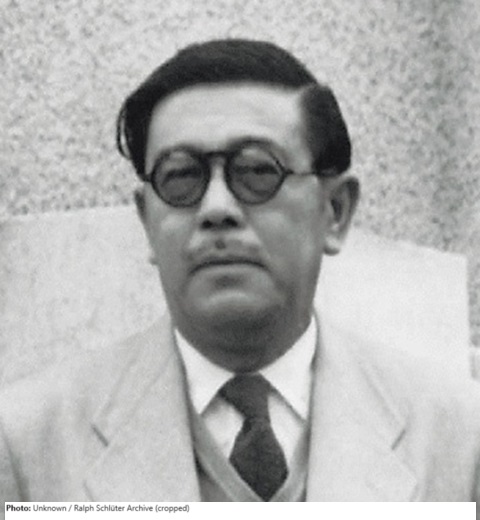
| Roles | Competed in Olympic Games |
|---|---|
| Sex | Male |
| Full name | Hideto•Kishida |
| Used name | Hideto•Kishida |
| Original name | 岸田•日出刀 |
| Born | 6 February 1899 in Fukuoka, Fukuoka (JPN) |
| Died | 3 May 1966 (aged 67 years 2 months 25 days) in Yamanakako, Yamanashi (JPN) |
| NOC |  Japan Japan |
Japanese architect Hideto Kishida was an authority on shaped design. He studied at the Tokyo Imperial University Department of Architecture in the Department of Engineering and graduated in 1922. He subsequently became a lecturer and assistant professor and made a trip to Europe for one year of studies in 1925. In 1929, he was appointed professor at the University of Tokyo. Inspired by Europe’s Werkbund Movement, he was one of the founding members of Nihon Kōsaku Bunka Remmei (Japan Work Culture Federation). Together with Yoshikazu Uchida, Kishida was involved in the design of Tokyo Yasuda Auditorium and the Library of the University of Tokyo. He was a member of the Architectural Institute of Japan and its chairman until 1947. Kishida received the Japan Art Academy Award in 1950 and retired in 1959 from his university post. He was also an expert on cultural heritage and was active in the preparations for the 1964 Tokyo Olympics art exhibition. In Japan he was best known for his book Japanese Architecture, written in 1932 and published in Europe in 1935. The book saw many updated editions, until into the 1960s.
Kishida designed a number of golf courses. The original 9-hole Akabane Golf Course of the Gakushikai, the university alumni organization of the Tokyo University, covering 10 hectares on the banks of the river Arakawa was designed by Orishimo Yoshinobu (1881-1966), while the club house was designed by Hideto Kishida in 1931. He later designed not only the clubhouses, but also the actual courses, especially in the mountainous region of Yugawara.
| Games | Discipline (Sport) / Event | NOC / Team | Pos | Medal | As | |
|---|---|---|---|---|---|---|
| 1936 Summer Olympics | Art Competitions |  JPN JPN |
Hideto Kishida | |||
| Architecture, Further Entries, Open (Olympic) |